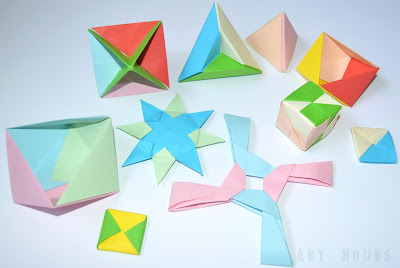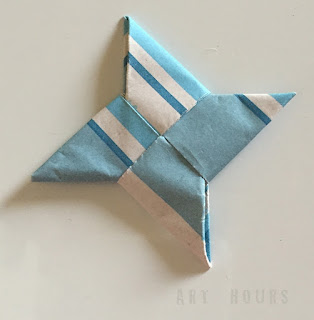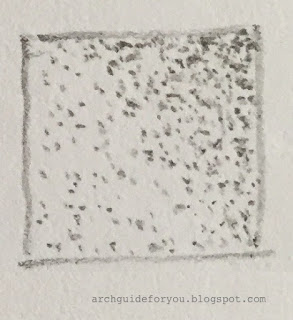"We don't give a damn to insects on our Earth, but if we could find even a single insect on Mars, the whole world would cherish it like crazy!...Truly said by a contemporary Turkish novelist of our times.
I have seen many people who love insects so much that they wouldn't kill them even if they crawl into their rooms. These insect lovers would gently pick them up and take them outside. On the other hand, there are people who just freak out at the very mention of the word insects. They would say that these tiny creatures defoliate our plants, trees, fruits...some would say they attack our houses, our furniture, our furs, and clothes...so how could you love these tiny creatures. But then, aren't we humans worse than insects. We kill for no reason. We are destroying this very planet inch by inch daily. Yet, we pride ourselves on being the superior creation on this earth....I believe there's something to learn from everything around us and nature especially. Apart from its beauty, nature is a treasure trove of wisdom. Take some time to look around you and you will find ample sources to learn. These tiny creatures are colorful and adorable...Just take some time out from your busy schedule once in a while and you will find beauty hidden in these little insects too.
"Only two percent of all insects are harmful. Why are they all in my garden?
Dearly respect the lifestyle of worms.
The spiders, grasshoppers, mantis, and moth larva are all back: the summer crowd has returned!
Snail - Squash! Tomato Worm - Squash! Grasshopper - Squash! The Garden Trooper is at War!" - Michael P. Garofalo, Pulling Onions.
What inspired me to make these little insects was not actually my love for them...but when I was searching for origami things to make for my workshop, I was amazed at the great origami artists' work who have made these insects with such intricate details that I was simply stupefied. I tried in my small capacity and with the time that I had in hand, to give a try to some of the easy models. Once done, I couldn't resist clicking pictures of them in their natural environs. So outdoor shooting it had to be! With the camera in one hand and a box full of these tiny origami models, I was peacefully shooting one tiny model after the other...avoiding the sharp sun rays getting into my eyes and teeny-weeny ants from crawling on my feet...and then I realised how come I missed making an ant...maybe some other time...for now let's deal with the ones in hand.
So here's presenting to you the summer crowd...my origami insects inspired of course from other origami artists...in no particular order.
So here's presenting to you the summer crowd...my origami insects inspired of course from other origami artists...in no particular order.
 |
| A Swallowtail |
Sing your song of flight
Carry me to winter's end
Paint my wings like yours.
- Chichi, Swallowtail
 |
| A Snail |
"Snails don't walk.
They slither and slide
Along wet pathways
Gleam and glide,
Squeezed between
The grasses green,
Polished houses shell-like gleam."
- Theresa Heine
 |
| A Beetle |
In the under woods where the noise faints
The vigilant fawn in dreams, rejoices
In the green petals of the mosses
The beetle, a living gold, gleams...
Translated from *Victor Hugo* - Spring
 |
| A Stag Beetle |
I found a little beetle; so that Beetle was his name,
And I called him Alexander and he answered just the same.
I put him in a match-box, and I kept him all the day...
- A. A. Milne, Forgiven
 |
| A Lady Bug |
Ladybugs all dressed in red
Strolling through the flowerbed.
If I were tiny just like you
I'd creep among the flowers too!
- Maria Fleming
 |
| A Buprestid |
Buprestidae is a family of beetles known as jewel beetles. From the fact that there are 400,000 species of beetle on this planet, but only 8,000 species of mammals, he concluded that the Creator, if he exists, has a special preference for beetles, and so we might be more likely to meet them than any other type of animal on a planet which would support life.
- J.B.S. Haldane, In Mark Williamson, 'Haldane's Special Preference', The Linnean, 1992.
 |
| A Red Butterfly |
"Happiness is a butterfly, which, when pursued, is always just beyond your grasp, but which, if you will sit down quietly, may alight upon you."
- Nathaniel Hawthorne
 |
| A Cabbageworm |
"It costs me never a stab nor squirm
To tread by chance upon a worm.
"Aha, my little dear," I say,"
- Dorothy Parker, Thought for a Sunshiny Morning
 |
| A Cicada |
Sibilant shimmers of cicadas
whirr the late August air...
- Late Summer
 |
| A Dragonfly |
“Despite its dark veins, the transparency of dragonfly’s wings assures me of a pure, innocent world”
- Munia Khan
 |
| A Giant Water Bug |
I ought to keep a giant water bug in an aquarium on my dresser, so I can think about it.”
- Annie Dillard, Pilgrim at Tinker Creek
 |
| A Grasshopper |
When all the birds are faint with the hot sun,
And hide in cooling trees, a voice will run
From hedge to hedge about the new-mown mead;
That is the Grasshopper's—he takes the lead...
- John Keats
 |
| A Spider |
"Much like a subtle spider which doth sit
In middle of her web, which spreadeth wide;
If aught do touch the utmost thread of it,
She feels it instantly on every side."
- Sir John Davies, 1570-1626, The Immortality of the Soul
 |
| A Yellow Butterfly |
"Just living is not enough," said the butterfly.
"One must have sunshine, freedom, and a little flower."
- Hans Christian Andersen
"One must have sunshine, freedom, and a little flower."
- Hans Christian Andersen
 |
| A Mantis |
Green and long I camouflage well in a tree
You will miss me on a blade of grass too, I like to be a mystery.
As I get ready to move, I bounce on my legs, back and forth,
My hands are praying and I'm ready to launch.
- Lyndsey Watts, The Praying Mantis
 |
| Another Stag Beetle |
"A little beetle passed me by.
He didn't make much fuss,
He ran around my garden
Like a tiny yellow bus."
- Slyvia Gerditz
Here's a slideshow video we uploaded recently on youtube that gives you a quick glimpse to the origami insects folded by us.
Thank you for stopping by...
---

































